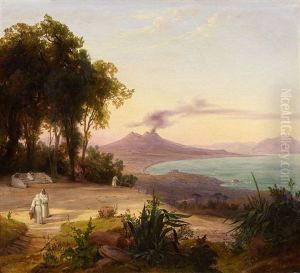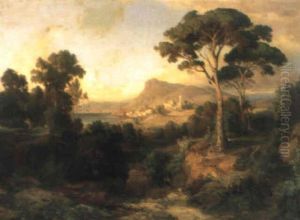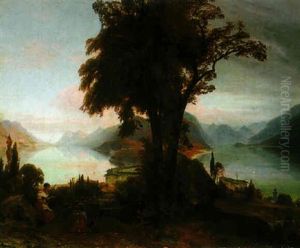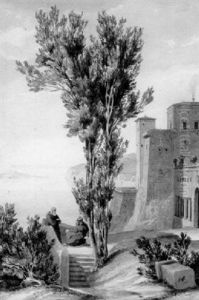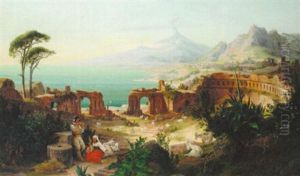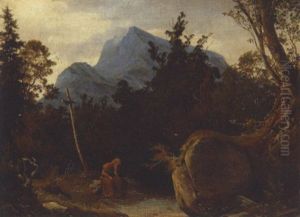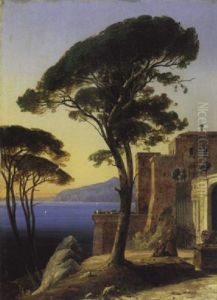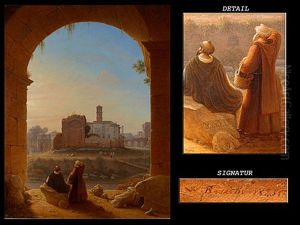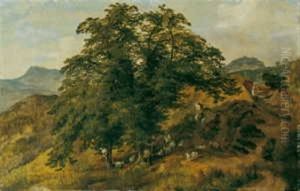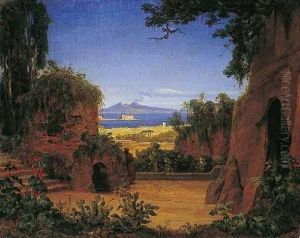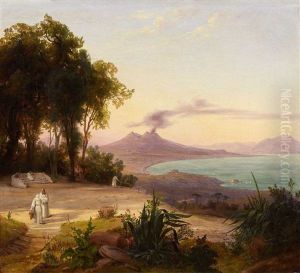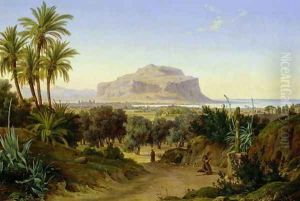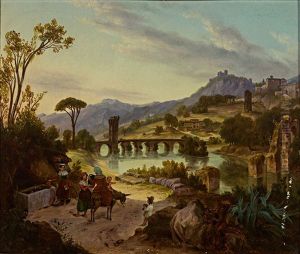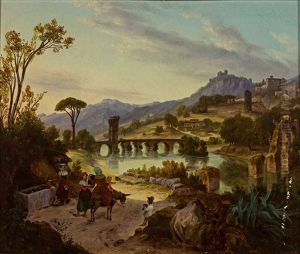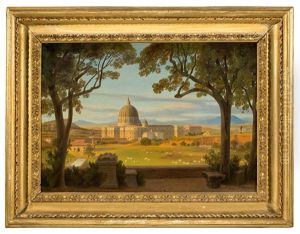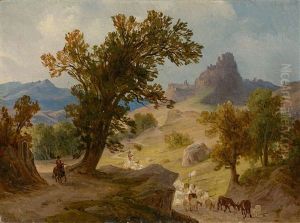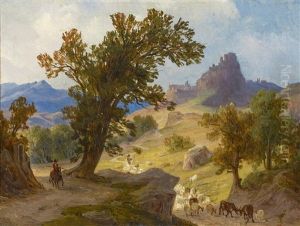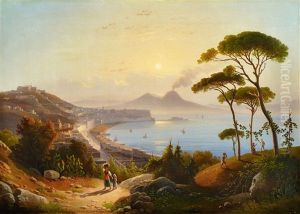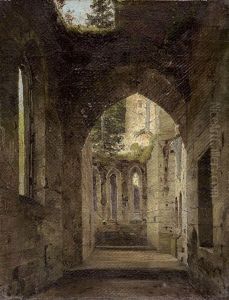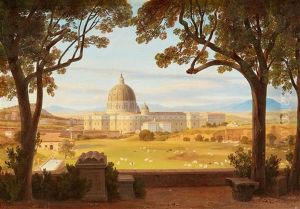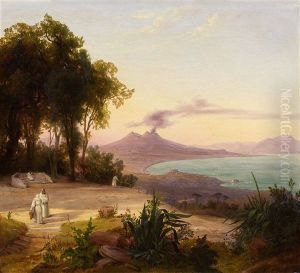August Wilhelm Julius Ahlborn Paintings
August Wilhelm Julius Ahlborn was a German landscape painter born on October 9, 1796, in Hanover. He is known for his romantic, meticulously executed paintings of nature. Ahlborn's works were influenced by the aesthetics and sentiments of the Romantic Movement, which emphasized the emotional and picturesque aspects of the natural landscape.
Ahlborn began his artistic education at the Academy of Fine Arts in Dresden, studying under the tutelage of the Norwegian painter Johan Christian Clausen Dahl, who was a prominent landscape artist of the time. Dahl's influence is evident in Ahlborn's detailed and atmospheric depictions of the natural world. After his studies, Ahlborn spent a significant period of his career in Italy, where he was enchanted by the Italian landscape and light. His Italian sojourn was crucial in the development of his style, which integrated the precise rendering of nature with a delicate sense of light and color.
Throughout his career, Ahlborn's paintings were well-received, and he gained recognition for his ability to capture the sublime beauty of nature. His works often feature dramatic skies, rugged terrain, and serene bodies of water, reflecting his deep appreciation for the untamed and majestic aspects of the environment. One of his notable works is 'Blick auf das Meer' (View of the Sea), which exemplifies his skill in portraying the play of light on the water's surface with accuracy and sensitivity.
Despite his success, Ahlborn's life was marred by personal tragedy, including the early death of his wife, which deeply affected him and his work. Nevertheless, he continued to paint and exhibit his works, and his paintings were sought after by collectors and art enthusiasts of the time.
Ahlborn's legacy is that of a dedicated landscape painter who contributed to the German Romantic tradition in art. His works continue to be appreciated for their technical excellence and their evocative portrayal of nature's grandeur. August Wilhelm Julius Ahlborn died on January 24, 1857, in Rome, leaving behind a body of work that continues to inspire and captivate art lovers around the world.
